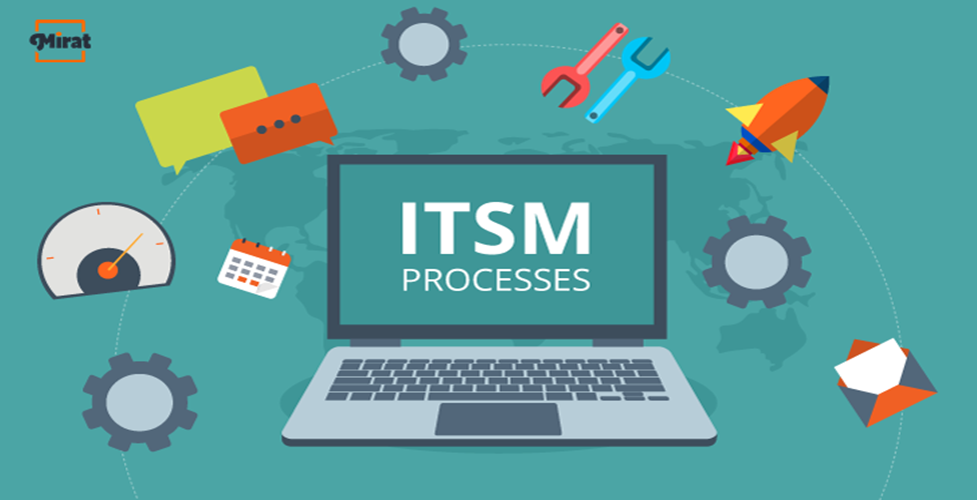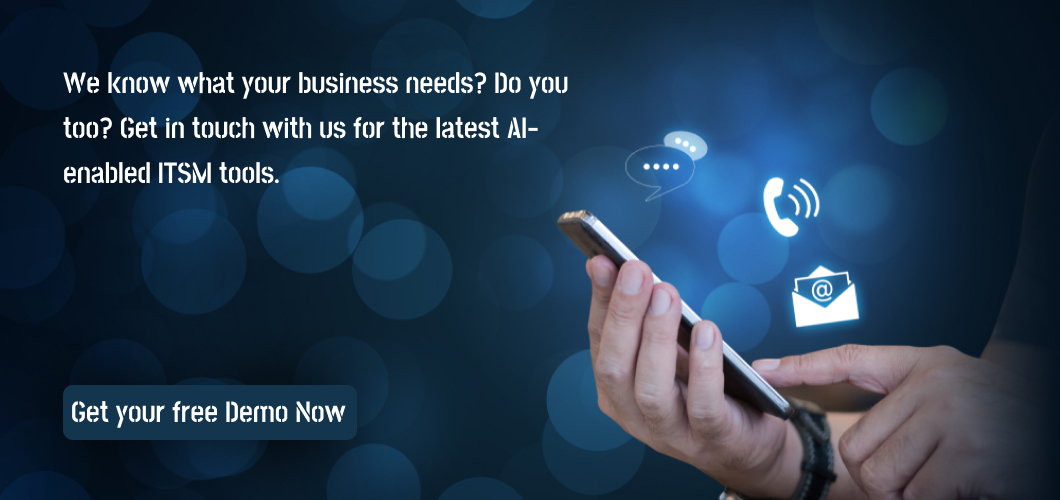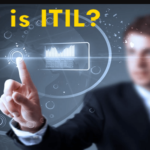What is ITSM?
IT service management (also known as ITSM) is the art of planning, executing, and providing IT services to satisfy an organization’s needs. It guarantees that the right people, procedures, and technology are in place to deliver results.
About ITSM
If change management ITSM is the art of running a business, it raises some interesting questions about its efficiency, like how does a company functions using an ITSM service desk? Who is it for? What is the aim of this? What tools are you using?
The delivery of IT as a service is the central concept underpinning change management ITSM. The aforementioned goes above and beyond standard IT assistance. ITSM service desk, on the other hand, is more inclusive. It encompasses all information technologies within an organization and outlines the methods and tools used by IT team to organise IT services from beginning to end.
ITSM framework ensures that the IT team’s aims are aligned with the company’s larger goals and that its actions support the overall purpose.
Let’s divide down ITSM into five areas of concern to start answering those questions:
- Employees and customers who use IT services are referred to as end-users.
- IT provides services such as applications, hardware, and infrastructure.
- Quality: Resolving IT issues quickly and effectively.
- Cost: Getting the most bang for your buck with your IT budget
- Business: Making it possible for any enterprise to carry out its primary functions and achieve the objectives within clicks.
Some ways that companies improve through best practices of ITSM are:
Faster delivery: companies can provide their customers faster and, in turn, can resume services more rapidly. The faster such demands are met, the more clients reconnect and improve the sales of your company.
Such frameworks serve as a complete guide to various functions such as quality control, software engineering, information security arrangement, etc. This ensures that your organization complies with regulatory requirements and remains on the right side of the law.
Cost savings: More services are automated for modern change management ITSM solutions, which will save businesses substantially.
5 Examples Of IT Service Management Processes
Although technology is an important aspect of IT infrastructure management, it should not be the only focus. ITIL ITSM processes are a broader concept that encompasses both traditional IT goals and business objectives. As a result, ITIL service management enhances overall efficiency. This is accomplished by the ITSM service desk in the following ways:
Incident Management
Organises and tracks problems, as well as service requests for additional services, software, or hardware. Service management software oversees the complete issue arrangement process to restore service to customers promptly.
Staff can focus their efforts to be the most productive by prioritizing events and service requests based on their business impact.
Issues Management
Using the ITIL subprocesses of problem control, error control, and proactive problem analysis, streamline incident investigations from detection to eradication.
Problem-solving procedures reduce flaws in the IT infrastructure, prevent recurrences, and maintain a stable environment.
Change & Release Management
ITSM keeps track of scheduled and planned infrastructure modifications and capabilities for process oversee and planning. Change is implemented more quickly and consistently, with fewer risks and errors.
For change and release management, this application has a built-in approval mechanism. The incident, problem, and service-level management applications are all fully integrated with the change module.
Service Level Management
Track service-level pledges from customers and vendors so that organizations may identify flaws and remedy them.
Requests Management
Organise and follow up on service requests, such as password resets, new workstation installations, personal data updates, and information access. Request management ensures that critical requests are always processed.
How does IT Service Management relate to ITIL?
The most basic answer is that ITSM is the practice, or professional discipline, of managing IT operations as a service. In contrast, ITIL is a set of best rules that provide guidance for ITSM—but that only scratches the surface. In reality, studying the history of IT organizations and how IT has grown over time may teach us a lot about the distinctions between ITSM and ITIL.
ITIL is the most widely used and recognized ITSM framework. IT service management is defined by ITIL as follows:
“Implementing and managing high-quality IT services that match the business’s needs.” IT service management is carried out by IT service providers using a combination of people, processes, and technology.”
ITIL is a best-practice framework that outlines how ITSM should be implemented. Despite the fact that there are various frameworks and standards for IT service management, ITIL is by far the most frequently used and acknowledged worldwide.
With the most advanced ITSM solution, deliver resilient services that enhance productivity and offer exceptional experiences wherever your workers work.
With a single cloud platform, you can future-proof your IT.
It is not always about IT.
HR and Facilities are two of the most common departments in any business that can perk using serve management software. Why is that, you ask? Well, isn’t it relatable? These departments, too, need to support their teams, handle incidents, look for damage control, change management, and resolve problems. When it comes to facilities, you might think about what has IT to do with them. In this case, the infrastructure is a building.
Every department into maintenance and support can benefit from service management, making the workflow efficient and customer-centric. It is no wonder that enterprise management deployed in every organization to track and update developments or drawbacks.
What is the future?
The past decades paved the way for some revolutionary IT service management advancements. Technology had the early 70s setting the IT tune, and the ’90s were all about SLA’s, but this time, it is all about understanding customers, their satisfaction, and their requirements. Todays IT scene offers more value for customers.
The three top enterprise service management trends you need to watch out for are:
-
DevOps
-
Workforce Enablement
What is WorkForce enablement?
Workforce enablement is all about using cutting-edge technology to boost customer satisfaction. It concentrates on the fact that clients’ requirements will constantly be shifting. They work independently on their own time, with their own apps and gadgets, they want to solve their own problems. This necessitates a different approach to ITSM. You can save time by ensuring that customers are satisfied and have everything they require to complete their tasks.
What is DevOps?
DevOps is quickly becoming one of the most popular ITSM trends as it works on the methodology that combines software development and IT operations into a single department or team. The conventional barriers between development and IT operations are broken down by DevOps. Budget, functional requirements, and performance, for example. DevOps enables an organization to evolve and enhance products more quickly by collaborating. As a result, businesses can better serve their customers and compete more successfully in the market.
How can I start?
We have a solution that will help you automate the ITSM processes in your organization, reduce costs, and increase efficiency. We make sure your customers are happy and that you reach your goals on time.
MIRAT ITSM offers a dashboard that resolves security risks and complies with the organization’s policies and also facilities with changes if needed.
Mirat.ai’s IT Infrastructure Management is Affordable & Easy to use! Get your Dashboard ready in only 5 Minutes. Request for Trial/Demo now (or) Contact our Team Now .
Contact Information:
Hema
Sales Executive
Phone: +1-315-636-4213
Email: sales@mirat.ai
Website: https://www.mirat.ai/




